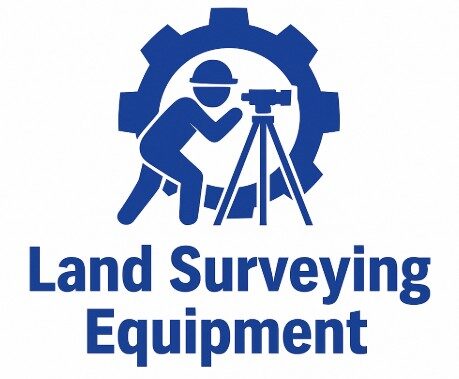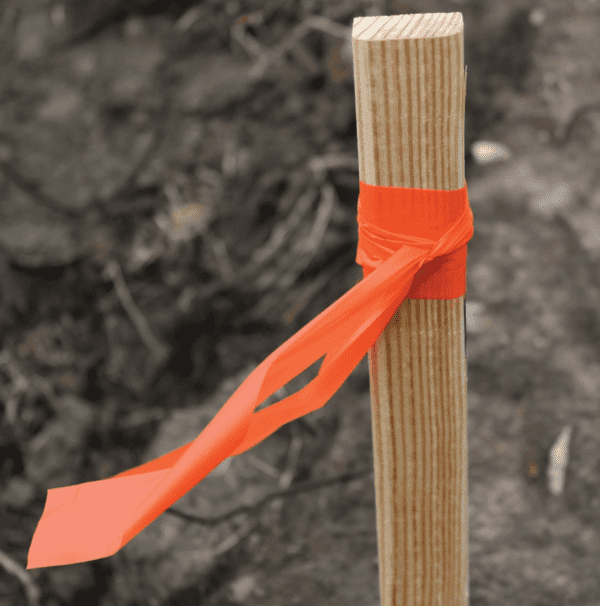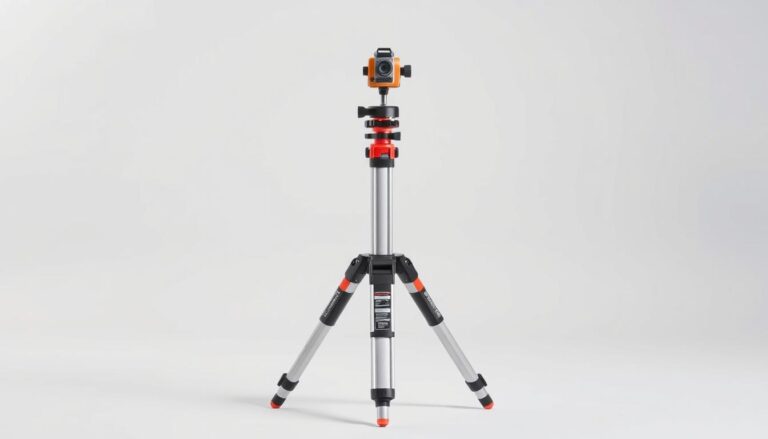Streamline Your Storage with Blueprint Storage Solutions
For architects and engineers, dealing with big documents is a big deal. Rolled documents need special care to avoid damage and stay easy to find.
Efficient Blueprint Storage Solutions is key to a smooth workflow and tidy space. Proper Blueprint Storage Solutions can turn a messy area into a place where work flows well.
Using specialized blueprint storage systems, like blueprint racks and blueprint cabinets, helps keep documents safe and within reach. This saves time and cuts down on the chance of damage.
Key Takeaways
- Efficient storage is crucial for professionals handling large-format documents.
- Proper storage solutions enhance workflow and organization.
- Specialized storage systems, like blueprint storage racks, improve document accessibility.
- Reducing clutter transforms a workspace into a productive environment.
- Safe storage minimizes the risk of document damage.
Understanding the Importance of Proper Blueprint Storage
Blueprints and construction documents are vital for many design and build professionals. They need to be stored carefully to keep them in good shape and easy to find. Storing large documents is tricky and can affect their usefulness.
The Challenges of Storing Large-Format Documents
Large documents like blueprints are hard to store because of their size. Improper storage can cause creases, tears, and damage, making them useless. The main challenges include:
- Not enough space to hold large documents
- The need for special storage to avoid damage
- It’s hard to organize and find stored documents
How Proper Storage Extends Blueprint Lifespan
Proper storage is key to keeping blueprints around longer. Using archival document storage methods helps protect them from harm. This includes:
- Using acid-free and lignin-free materials to prevent damage
- Keeping blueprints in a stable environment with controlled temperature and humidity
- Handling them carefully to prevent physical harm
Assessing Your Blueprint Storage Needs
To store blueprints well, you need to know what you need. Think about the size, number, and type of documents you have. Also, consider how much space you have. Important things to think about include:
- The number of blueprints you have to store
- How often you need to access them
- The space you have for storage and if you need blueprint storage containers or blueprint storage bins
By understanding these points, you can pick the best storage options. This ensures your blueprints stay in good shape and are easy to get to.
Comprehensive Blueprint Storage Solutions for Every Need
Blueprint storage is key for architectural and engineering firms. They need solutions that fit their unique needs. There are many storage options, but knowing the differences helps in making the right choice.
Vertical vs. Horizontal Storage Options
Choosing between vertical and horizontal storage for blueprints is a big decision. Vertical storage saves floor space, perfect for small offices. Horizontal storage, like flat file cabinets, offers easy access and is great for frequent use.
The type of documents also plays a role. Large documents need horizontal storage to avoid damage and stay flat.
Space-Saving Solutions for Small Offices
Small offices need space-saving blueprint storage solutions. Wall-mounted shelves and compact units are great for saving space without clutter.
Blueprint storage racks for small spaces are also useful. They keep the office tidy and improve workflow.
High-Volume Storage for Architecture Firms
Architecture firms need storage for many blueprints. Large document storage racks handle big volumes, keeping documents organized and accessible.
For firms with lots of blueprints, a strong storage system is vital. It keeps things organized and protects documents from damage.
Cost Comparison of Different Solutions
Cost is a big factor in choosing blueprint storage. A comparison table shows the cost differences.
| Storage Type | Cost | Space Efficiency |
|---|---|---|
| Vertical Storage | Moderate | High |
| Horizontal Storage | High | Moderate |
| Compact Storage Units | Low to Moderate | High |
Storage costs vary by size, material, and brand. It’s important to find a balance between cost and need for an effective and affordable solution.

Blueprint Storage Racks: Installation and Usage Guide
The right blueprint storage rack can make a big difference in managing large documents. These racks keep your documents organized, safe, and easy to find.
Wall-Mounted Blueprint Storage Racks
Wall-mounted racks are great for offices with little floor space. They keep blueprints off the floor, cutting down on clutter and making them easier to get to. These racks are mounted on walls, offering a strong and dependable place to store your documents.
Key benefits of wall-mounted racks include:
- Space-saving design
- Easy access to stored blueprints
- Durable and sturdy construction
Mobile Blueprint Rack Systems
Mobile rack systems are flexible and easy to move. They’re perfect for offices that need to access different blueprints often. These systems let you take your blueprints wherever you need them.
Advantages of mobile blueprint rack systems:
- Flexibility in storage and retrieval
- Space-efficient, as they can be moved to different locations
- Enhanced productivity by reducing the time spent searching for documents
DIY Blueprint Rack Solutions
DIY racks are a budget-friendly and customizable option. Building your own rack lets you design it to fit your exact needs.
Materials Needed
To make a DIY rack, you’ll need:
- Wood or metal framing materials
- Shelving boards
- Screws and brackets
- Drill and saw
Step-by-Step Construction Guide
Here’s how to build your DIY rack:
- Measure and plan the rack’s size based on your space and needs.
- Cut the framing materials to the right lengths.
- Put the frame together with screws and brackets.
- Attach the shelving boards to the frame.
- Install the rack where you want it.
Selecting and Organizing Blueprint Storage Cabinets
Blueprint storage cabinets are key to keeping large documents safe and easy to find. The right storage can greatly improve project efficiency in architecture and engineering.
Flat File Cabinet Systems
Flat file cabinet systems are perfect for storing large documents like blueprints. They keep documents flat, which reduces damage and creasing risks. Flat file cabinets are great for places where blueprints are often needed.
Vertical Cabinet Solutions
Vertical cabinet solutions are another smart way to store blueprints. They save space by storing documents upright. Efficient use of space is a big plus for vertical storage.
Blueprint Storage Drawers for Easy Access
Blueprint storage drawers make it easy to find documents. They can be set up in many ways to boost productivity and access.
Organizing Drawers by Project Type
Organizing drawers by project type is a smart way to manage blueprints. It lets users quickly find documents for a specific project. Labeling drawers clearly is key to keeping things organized.
- Group blueprints by project phase
- Use dividers to separate projects within a drawer
- Label each drawer with the project name or identifier
Maintenance and Cleaning Tips
Keeping blueprint storage cabinets clean and well-maintained is vital. Dust and moisture can harm documents, so it’s important to keep the area clean and dry. Regularly inspecting the cabinets and their contents helps prevent damage.
- Check for dust accumulation and clean as necessary
- Ensure the storage area is free from moisture
- Use protective covers for blueprints to prevent damage
Portable Blueprint Storage Options for Field Work
For those who work on the move, having good storage for blueprints is key. Architects, engineers, and construction workers all benefit from the right storage. It can really improve how you work.
Blueprint Storage Tubes and Their Applications
Storage tubes are great for carrying big documents. They’re made tough, like plastic or cardboard, and have caps to keep things in.
Key benefits of blueprint storage tubes include:
- Protection from damage and creasing
- Easy transportation
- Water resistance (for some models)
Blueprint Storage Boxes for Transportation
For carrying lots of blueprints, boxes are the way to go. They keep your documents safe and can be made from plastic or wood.
When choosing a blueprint storage box, consider the following factors:
- Size and capacity
- Material durability
- Portability features (e.g., handles)
Blueprint Storage Bins for Temporary Organization
Storage bins are handy for organizing on the job or in the office. They help keep your blueprints in order, making them easy to find.
Weatherproofing Your Portable Storage
It’s important to keep your blueprints dry when working outside. Weatherproofing your storage helps protect against rain, dust, and more.
Tips for weatherproofing your portable blueprint storage:
- Use waterproof storage tubes or boxes
- Apply a waterproof coating or sealant
- Store blueprints in a dry, covered area when not in use
| Storage Option | Key Features | Benefits |
|---|---|---|
| Blueprint Storage Tubes | Durable materials, secure caps | Protects from damage, easy to transport |
| Blueprint Storage Boxes | Variety of materials, secure closure | Holds multiple blueprints, portable |
| Blueprint Storage Bins | Categorizes and stores blueprints | Temporary organization, easy access |
Implementing Blueprint Storage Clamps and Hanging Systems
Blueprint clamps and hanging systems are great for storing large documents. They keep blueprints organized, easy to find, and in great shape. Using these systems can really improve how you manage your documents.
Wall-Mounted Clamp Systems: Installation Guide
Wall-mounted clamp systems are a top pick for blueprint storage. First, pick a spot on the wall that’s easy to reach and big enough for your blueprints. Make sure the wall can hold the weight of the clamps and the documents. You’ll need to mount a rail or bracket on the wall, then attach the clamps.
It’s key to follow the maker’s instructions when setting up these systems. This ensures they work well and are safe. You might need special tools and parts from the system.
Mobile Blueprint Clamp Racks
Mobile clamp racks offer flexibility and can be moved around. They’re perfect for shared spaces or areas that change often. They’re great when your storage needs shift a lot.
These racks come in different styles, some with locks to keep things in place. Think about the size of your blueprints, the space you have, and how often you’ll move the rack.
Best Practices for Using Blueprint Clamps
To use blueprint clamps effectively, follow some key tips. Don’t overload the clamps to avoid damaging the documents. Check the clamps and documents often to catch any wear.
Preventing Document Damage
Using blueprint clamps helps prevent damage to your documents. Make sure the clamps aren’t too tight, which can cause creases or tears. Be gentle when putting documents in or taking them out of the clamps.
Organizing by Project Phase
Organizing blueprints by project phase is a smart move. This means sorting them by the project stage they belong to, like design or construction. This makes it easy to find the right documents when you need them.
By following these tips, you can make the most of blueprint clamps and hanging systems. This ensures your documents are organized, easy to access, and in top condition.
Multifunctional Blueprint Storage Tables and Workstations
Blueprint storage solutions have changed a lot. Now, multifunctional tables lead the way. These tables mix storage and work areas, helping architects, designers, and engineers a lot.
Integrated Storage and Work Surfaces
Multifunctional tables have storage and work areas together. They have built-in bins, drawers, or shelves. This keeps blueprints and documents tidy and easy to find.
Key Features:
- Integrated storage compartments
- Large work surface area
- Ergonomic design for comfort
Adjustable Blueprint Tables with Storage
Adjustable tables with storage are flexible and handy. They can change height and angle for different tasks. They also have spots for blueprints and office stuff.
Benefits:
- Adjustable height and angle for comfort
- Storage for blueprints and supplies
- Durable construction for long-term use
Multi-Purpose Workstations for Small Spaces
In small offices or studios, multi-purpose workstations are key. They combine a blueprint table with storage, making a small space work well.
Setting Up an Efficient Workflow
To make your workflow better with a multifunctional table, follow these tips:
- Put the table in a central spot
- Organize storage for easy access
- Use the work surface for tasks and projects
Adding a multifunctional table to your space can make you more productive. It helps you work more efficiently.
Creative Blueprint Storage Ideas for Limited Spaces
Creating space in tight spots needs creativity and smart storage plans. People working in small offices or shared spaces often struggle to stay organized. They don’t want to lose valuable floor space.
One smart move is to turn old furniture into storage. For example, an old dresser or bookshelf can become a storage spot. Repurposing furniture is good for the planet and can make your space unique.
Repurposing Existing Furniture for Blueprint Storage
Turning old furniture into storage takes some creativity and DIY skills. Here are a few ideas:
- Make an old file cabinet into a blueprint storage unit
- Use a vintage bookshelf for rolled blueprints
- Change a storage ottoman into a secret storage spot
By breathing new life into old furniture, you can make your space both useful and interesting.
Wall and Ceiling Storage Solutions
Using wall and ceiling space is a great way to save room. Wall-mounted racks or ceiling storage can keep blueprints tidy and within reach.
Some top picks for wall and ceiling storage include:
- Wall-mounted blueprint racks with adjustable clamps
- Ceiling-mounted systems for rolled blueprints
- Sliding wall units for big documents
Digital Alternatives to Physical Storage
Going digital can cut down on storage needs. Digital storage solutions make it easy to share and keep documents safe.
Scanning and Archiving Workflows
Setting up a scanning and archiving system has several steps:
- Scan blueprints with a large-format scanner
- Use a clear naming system for digital files
- Store digital files in the cloud or on hard drives
A well-organized digital archive keeps important documents safe and easy to find.
Hybrid Physical-Digital Systems
Many people find a mix of physical and digital storage works best. This means keeping often-used blueprints in hand while keeping a digital copy.
| Storage Method | Advantages | Disadvantages |
|---|---|---|
| Physical Storage | Easy to access, feels real | Takes up space, can get damaged |
| Digital Storage | Saves space, easy to share | Needs digital setup, data can be lost |
| Hybrid System | Good balance of access and space | Needs upkeep of both systems |
Conclusion
Choosing the right blueprint storage solutions is key for those who work with big documents. Good storage keeps these documents safe and makes it easier to find what you need. This boosts productivity.
We looked at different storage options like racks, cabinets, and portable solutions. Each one meets different needs, from saving space to handling lots of documents.
By picking the right storage, professionals can clear up clutter and manage documents better. This makes their work flow smoother. It’s a smart move for a more efficient workspace.
As we handle big documents, finding the right storage is crucial. It keeps our documents safe and helps us work better. It makes our workspace more organized and productive.






